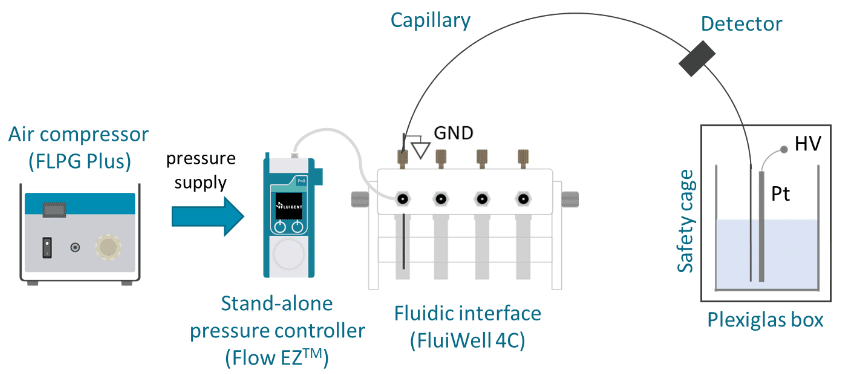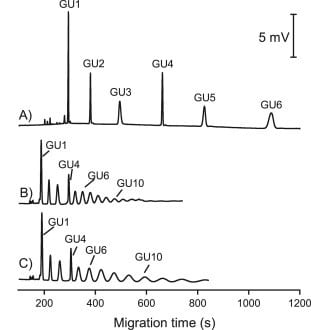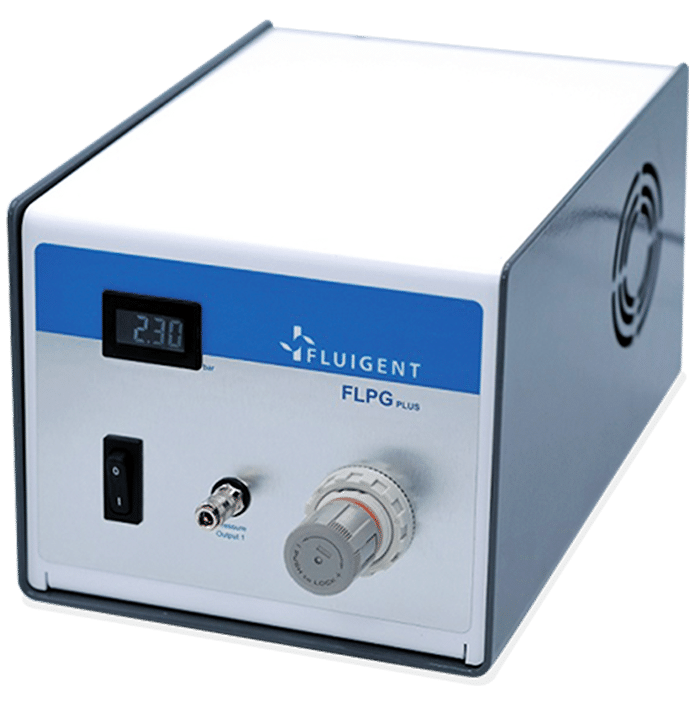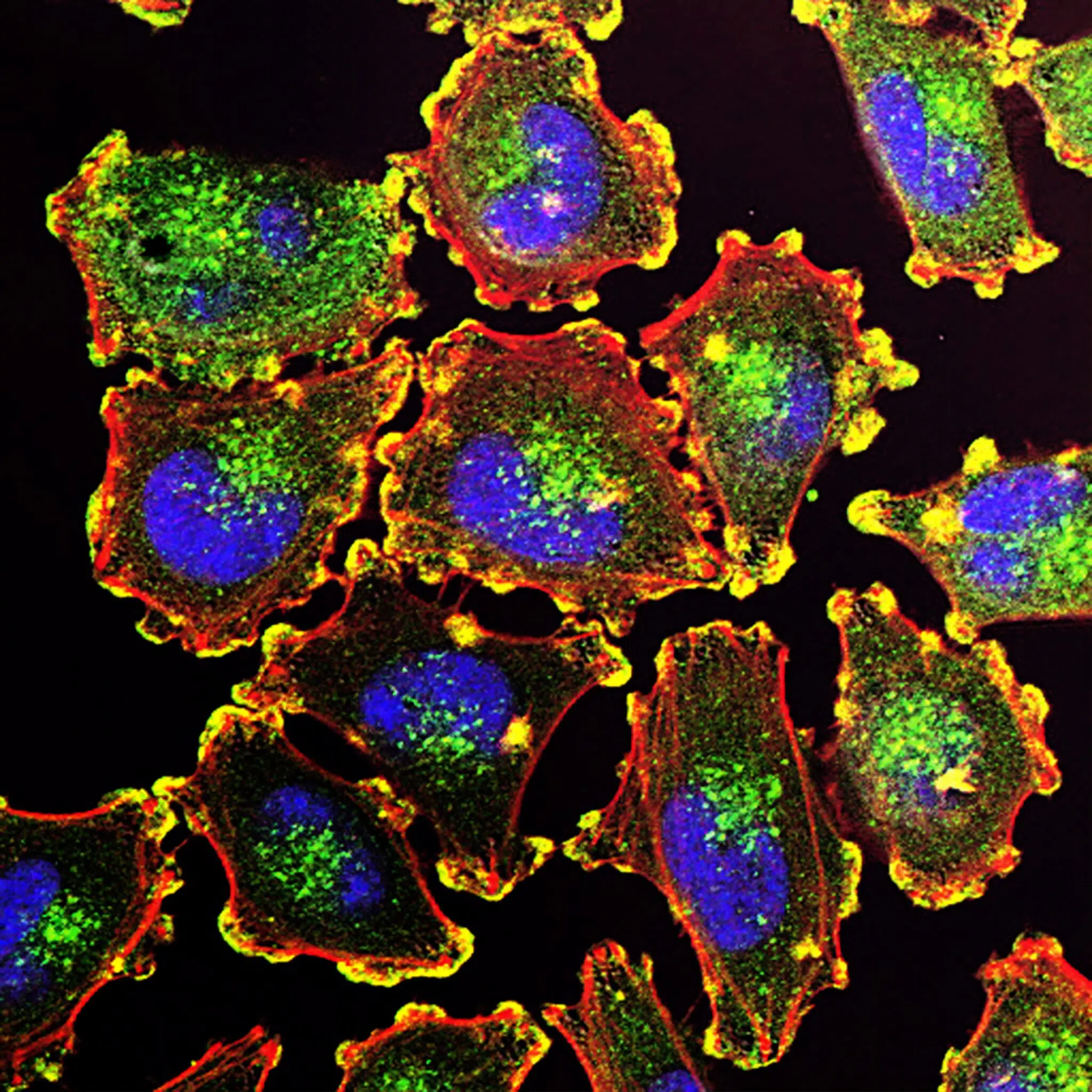Capillary electrophoresis using microfluidic, electrophoretic, and optic modules
Here we present here the Lego CE system consisting of available ready-to-use electrophoretic and microfluidic modules, including pressure-based flow controllers. The instrument is coupled with a laser-induced fluorescence detector (LIF) and is demonstrated for separations of labeled oligosaccharides
We kindly thank the Laboratory of Proteins and Nanotechnology in Analytical Science (PNAS, Institut Galien Paris Saclay, University Paris Saclay) for this partnership, and for sharing the results obtained with their system.

What is capillary electrophoresis (CE)?
The capillary electrophoretic method is an analytical technique that separates ions based on their electrophoretic mobility with the use of an applied voltage. The electrophoretic mobility is dependent upon the charge of the molecule, the viscosity, and the atom’s radius. The rate at which the particle moves is directly proportional to the applied electric field–the greater the field strength, the faster the mobility. Neutral species are not affected, only ions move with the electric field. If two ions are the same size, the one with greater charge will move the fastest. For ions of the same charge, the smaller particle has less friction and overall faster migration rate (1).
Which method is used in this type of electrophoresis?
There are many methods under the umbrella term of capillary electrophoresis such as; capillary zone electrophoresis (CZE), capillary gel electrophoresis (CGE), micellar electrokinetic capillary chromatography (MEKC), capillary electrochromatography (CEC), capillary isoelectric focusing (CIEF), and capillary isotachophoresis (CITP). While all methods possess unique processes, these all work on the same basic principle. All techniques use an electric current to move molecules through a tube (a capillary) (1).
Currently, there are several robust and highly automated commercial benchtop instruments available for CE. However, these systems are very expensive and cumbersome, and therefore inaccessible for academic research. Consequently, home-built CE has been implemented to meet the urgent demand for affordable and simple analytical devices. Simple EC systems with siphon injection have been implemented, requiring only a high-voltage (HV) module, a capillary, and vials. However, the injection mode is not reproducible and manual washing with plastic syringes carries a high risk of sample contamination. More advanced CE systems are available, but often require electronic and mechanical expertise (2).
In order to improve the popularity of Capillary electrophoresis, the Institut Galien Paris Saclay (Paris Saclay University) has endeavored to develop an easy-to-build, high-performance CE system, a “Lego CE”, consisting of off-the-shelf electrophoretic and microfluidic modules , including pressure-based flow controllers. Using a laser-induced fluorescence (LIF) detector, the device is able to effectively separate labeled oligosaccharides, as demonstrated.
What is capillary electrophoretic technology used for?
After almost 40 years of development and instrument commercialization, electrophoretic mobility based system is now among established analytical techniques and becomes the method of choice for several classes of analytes, notably DNA, glycans, therapeutic proteins, chiral molecules, and inorganic ions (2).
Capillary electrophoretic separation has a wide range of applications in a variety of fields including:
Forensics – In forensics, CE is used to analyze all types of evidence collected from crime scenes and is the preferred method for investigating post-blast and gunshot residues and low levels of explosives.
Pharmaceuticals – CE has multiple applications in the pharmaceutical field. It is used to determine target proteins and the structure and purity of a sample, which are critical factors in drug development. It is also used in chiral separations, which is integral to the development of new drugs that may be safer and more effective.
Medical – Clinical applications of CE include diagnosis of blood disorders, therapeutic drug monitoring, and detection of several inherited genetic disorders such as mitochondrial heteroplasmy, cystic fibrosis, spinocerebellar ataxia, and fragile X. It is also used to identify gene polymorphisms associated with cancer diagnosis and to determine the best treatment strategies.
Industrial– In the industrial sector, Capillary electrophoresis is used to analyze various products such as food additives, animal nutrition, detergents, and herbicide.
How to perform capillary electrophoresis with the Lego CE system?

Additional materials
- (Laser-Induced Fluorescence Detector) LIF module
- Electrophoresis module
- Background electrolyte
- Analyte
Partial results

Figure 2: Electropherograms for CE-LIF separations of oligosaccharide ladders using the Lego CE-LIF instrument; hydrodynamic injection at 50 mbar over 10s. A) Without pressure assistance; B) With pressure assistance at 30 mbar from t = 0s; C) With pressure gradient: 30 mbar at t = 0s, then 20 mbar at t = 5 min1
Separation and detection of APTS labelled oligosaccharides
Glucose-oligosaccharides are often used as the ladder reference for analyzing N-glycans released from glycoproteins, serving for quality control of therapeutic glycoproteins and diagnostic purposes (3, 4).
The Lego CE-LIF was used for separations of APTS-labelled oligosaccharides. Figure 3 shows the electropherograms obtained without pressure assistance (figure 3A), using pressure assistance of 30 mbar t = 0 s (figure 3B), and using pressure assistance of 30 mbar at t=0 s and 20 mbar at t = 5 min (figure 3C).
We can observe that excellent peak shapes and separation resolutions are achieved for glucose units GU1 till GU6. To compensate for the peak retardation when using beta-alanine/MES BGE, pressure assistance can be applied during electrophoresis, which is not difficult when using the Flow EZ pressure controller. As we can see in figure 3B, the peaks arrived faster to the detector and more glucose units could be visualized under the pressure assistance at 30 mbar. To finely tune the electrophoresis, it is also possible to use a pressure gradient. By applying a pressure of 30 mbar at 0s and then 20 mbar at 5 min, the fast arrival of the first four peaks could be maintained, whereas separation resolution for the slower ones, which could correspond to the sizes of large N-glycans of glycoproteins, was improved (see figure 3C).
Conclusion
A new Lego CE, that can be fully constructed using commercially-available products, was successfully developed. The need for electronic and mechanical skills, which is often a barrier for constructing in-house Capillary electrophoresis, is remarkably reduced. The great functioning of this system was demonstrated by separating and detecting fluorescent oligosaccharides. By using pressure assistance provided by the Fluigent instruments, it is possible to accelerate the detection, while keeping a good separation between each peak. Additional experiments have been performed using this system, including testing of different electrolyte, comparing the performance with a commercial capillary electrophoresis system. All these results and more information concerning this Lego CE system can be found in the great paper written by Liénard-Mayor et. Al (1). The Lego design would allow the users to setup their own analytical devices at a cost at least 70 % cheaper than the purchase price of a commercial system while keeping a high degree of standardization (i.e. a ‘standard’ setup) and facilitation of technology transfer that are not offered by in-house-made versions.
References
- Li, Sam. Capillary Electrophoresis: Principles, Practice, and Applications. Journal of Chromatography Library; Elsevier Science Publishers: The Netherlands, 1992; Vol 52.
- Théo Liénard-Mayor, Jasmine S. Furter, Myriam Taverna, Hung Viet Pham, Peter C. Hauser, T. D. M. Modular instrumentation for capillary electrophoresis with laser induced fluorescence detection using plug-and-play microfluidic, electrophoretic and optic modules. Anal. Chim. Acta 1135, (2020).
- Zhang, P. et al. Challenges of glycosylation analysis and control: An integrated approach to producing optimal and consistent therapeutic drugs. Drug Discov. Today 21, 740–765 (2016).
- Hu, M., Lan, Y., Lu, A., Ma, X. & Zhang, L. Glycan-based biomarkers for diagnosis of cancers and other diseases: Past, present, and future. Progress in Molecular Biology and Translational Science vol. 162 (Elsevier Inc., 2019).





